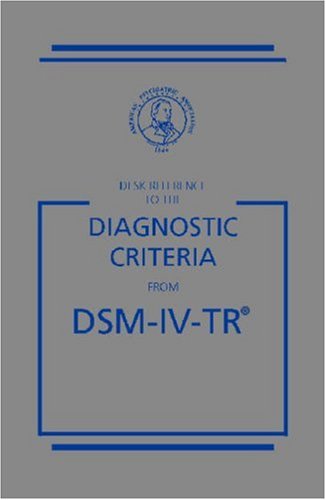Lesson 9: DSM in Case Management
Attention

DSM V is actually currently under development and review and promises to make a LOT of changes from the current version
Click HERE to visit the webstie on DSM V
Learning Outcomes
Upon completion of this lesson's material, students will be able to:
- Learn the basics of DSM-IV to facilitate reading client files and discussing cases with clinicians.
- Understand interactions of co-occurring medical issues
Teaching
Read Chapter 17
The diagnostic and statistical manual is a reference book that describes the criteria necessary in order to qualify for each mental illness. In Maine, case managers do not provide a mental health diagnosis. In order for a client to qualify for case management, the client will already have been given a diagnosis by a master's level clinician or a doctor. The diagnosis can be very useful to a case manager's work.
Co-occurring medical issues speak to the interaction between conditions that the client may experience. When we look at co-occurring disorders, it generally speaks to substance abuse paired with a mental health issue. Here we look at broader medical issues combining with mental health problems. For example, a client who has diabetes that is not well managed may present with depression. It is key to be aware of the possible interactions between medical conditions and mental illness.
Diagnoses are provided along 5 different "axis"...these are described as follows:
The primary use of the DSM is to provide guidance on treatment...this is NOT the primary role of Case Management! Case Management focuses on linking resources to clients in order to overcome barriers related to their mental illness...ONE of these may be treatment to reduce symptoms.
Assessment
Lesson 9 Quiz
- What Axis is used to record general medical conditions that may be relevant to the current mental health issue?
- Look up a diagnosis in the DSM. Describe how the symptoms of this diagnosis may create BARRIERS for their independent living and describe how you, as a case manager, may provide or link them to services to address this issue.
Use THIS online source for DSM Diagnoses